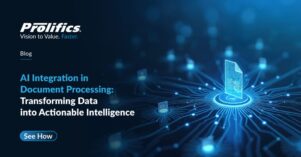The COVID-19 pandemic has reshaped the job market, with unemployment numbers not seen since the Great Depression. More than 36 million people are currently unemployed. A critical question now: when businesses begin hiring again, how will millions of people be vetted and onboarded efficiently?
Many companies are preparing for mass hiring, which means mass onboarding. The challenge? Most onboarding processes are still manual—reviewing I-9s and W-4s, validating direct deposit information, entering data into multiple systems, notifying departments, and managing training schedules. The process is slow, error-prone, and overwhelming at scale.
That’s why organizations are turning to automated onboarding solutions. But not all solutions are equal. Here are five questions to ask before choosing one.
1. Can it recognize and organize paperwork?
New hires often send poorly labeled documents like “scandoc2020-04-17”. When you’re dealing with a handful of employees, it’s a nuisance. With hundreds, it becomes a nightmare.
Your onboarding solution should:
- Read and categorize emails and attachments.
- Identify form types automatically.
- Route documents to the right system or department without manual review.
2. Does it catch mistakes, inconsistencies, and blanks?
Errors like “Tommy” in one form and “Thomas” in another, missing phone numbers, or unsigned W-4s slow down the process.
Look for a solution that performs:
- Data validation checks.
- Consistency reviews across forms.
- Semantic checks for completeness and correct formatting.
This prevents small issues from snowballing into big problems later.
3. Will it integrate across systems and departments?
True onboarding efficiency goes beyond collecting forms. Your solution should seamlessly connect with:
- Payroll and benefits systems.
- HR and employee profile databases.
- Security and facilities teams (for access badges, equipment, etc.).
If you still have to send manual emails for every new hire’s key card, the solution isn’t doing enough.
4. Can it learn and adapt?
Basic robotic process automation (RPA) is powerful—it handles repetitive tasks with speed and accuracy. But the real advantage comes when RPA is combined with artificial intelligence and machine learning (AI/ML).
AI/ML can:
- Adapt to your company’s unique onboarding workflows.
- Learn from exceptions and apply those insights.
- Navigate HR systems with greater intelligence.
A strong tech provider should be able to deliver AI/ML customizations in just 10–14 days.
5. Does it handle “the extras”?
Think beyond paperwork. A comprehensive solution should:
- Identify equipment and supplies new hires need (including protective gear).
- Automatically schedule training sessions based on job role.
- Enforce compliance with new workplace safety regulations.
The goal is to automate as much as possible, with HR professionals stepping in only when necessary.
Prolifics Can Help
Meet Leia, our digital employee onboarding officer. Leia completes onboarding in minutes, not days. She can:
- Identify and process forms and documents.
- Connect with HR systems.
- Enroll hires in payroll, benefits, and training.
- Notify managers, security, and facilities.
Leia helps you manage applicant volumes, reduce errors, and speed up onboarding—leading to happier managers and new hires.
📩 Connect with Leia at solutions@prolifics.com.




